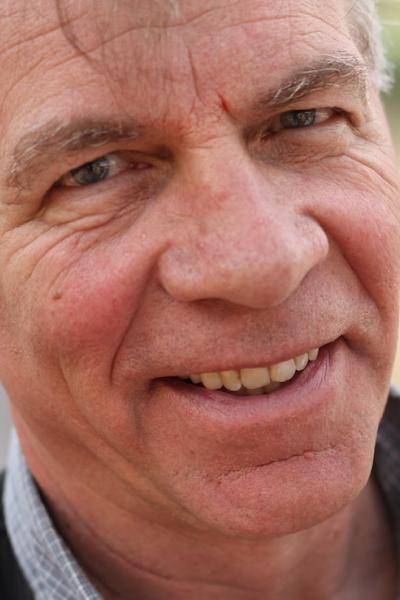2013
2013

The union Pfister has identified between pilgrimage and poetry is a helpful starting place for a structural understanding of his work. In the barest sense, Pfister’s poems are basically a retrospective transcription of the experience of hiking Spain’s ancient pilgrim trail, El Camino de Santiago. However, once one has ventured into the poems themselves, one intuits early on that there is a union between poetry and pilgrimage that exceeds a mere recording of memories. The poems do not just index the journey; they are the journey, articulating, on the one hand, the rhythmic progression of the pilgrims on the trail, and, on the other hand, the phenomenological intimacy between poetic language and the human body.
Each individual poem can be read as a footstep forwarding the pilgrims’ progression along the Camino. Each is of comparable length to the others, never exceeding a page, and each is possessed of the same tedious, meditative rigor that the pilgrims themselves possess. Pfister’s poetic language confirms that the poems are footsteps through the repeated trope of aching or swollen feet. The poem “Dawn,” for example, references the “blistered feet” of the pilgrims, while “Camino” mentions the “tracks of stars and blisters” beneath their feet.
What Pfister achieves through this union of feet and mind is an idealistic synthesis of pilgrim and poet, a synthesis that enables the pilgrim to “walk” in poetic language as naturally and effortlessly as he walks in his own body. Because Pfister strives for an effortless, bodily poetry, his poems are rather short on turgid words. What they offer, instead, is a condensation and intensification of poetic language that imitates the basic rhythms of the walking body. In “Journey’s End,” the monosyllabic action verbs carried out by the pilgrims reflect the intensity of their experience on the Camino: “We eat, drink, talk,/laugh, heal,/and then sleep on beds/molded to our bones.”
According to Pfister: “pilgrimage is not just poetry in motion but motion turned into poetry, motion which, step by step, transforms into stillness.” The union of motion and stillness is inseparable from the union of pilgrimage and poetry. Pilgrimage and poetry are motions – actually, one and the same motion – that distill stillness. But what does it mean that motion – walking, poeticizing – distills stillness?
“Dawn” describes the pilgrims rising from sleep. In this poem, stillness is something that is shared between a body and the world exterior to it. The trilling of a bird “blinks an eye,” waking the pilgrims from a dream-filled sleep. Stillness, then, is a restfulness that retains a gentle inertia, for it becomes motion again at the merest prodding – a bird’s trill, a pilgrim’s breath. It is an inertia that moving beings and the living landscape share with one another at the proper moment, such as this one in “Dark Tangled Woods,” where the poetic voice, trudging disembodied-like through a dense wood, comments:
The Camino is invisible,
yet shines
like stars that have sent light
but no longer glow.
An unseen world calls
like an echo
of a long dead sound.
In “Arrival,” the poetic voice tells how, “At the Door of Glory/we genuflect/and whisper yes.” Walking unto exhaustion, genuflection, and prayer are the oft-repeated motive tropes that engender stillness, while stillness, experienced as a restfulness ever quickening, reverts back toward motion. Pfister’s poems iterate the circular shuttling between motion and stillness again and again, until the poetic journey of the pilgrims becomes one of “turning” from one state to the next: “We walk until we turn,/turn back into the place we left.”
Pfister’s poetic intuition for the unions between body and language, motion and stillness, are a reminder to us that these are not universally accessible ventures. Humankind has recently achieved a digital mobility that enables it to cover great distances instantaneously, but do the digitally mobile know motion, and do they seek stillness? Moreover, do they inhabit bodies that are capable of walking as intimately with language as Pfister attempts to walk? More than any interpretive analysis, perhaps asking these open-ended questions, which point directly toward a shared political and social reality that does not appear as such in the poems, is the next step for Pfister’s readership. And, perhaps, the reality that such questions are trying to engage is the same reality in which Pfister’s poems will swell heaviest.
– Adapted from Kelly Swope’s “Afterword” to Patrick Pfister’s forthcoming book, El Camino and Other Travel Poems
